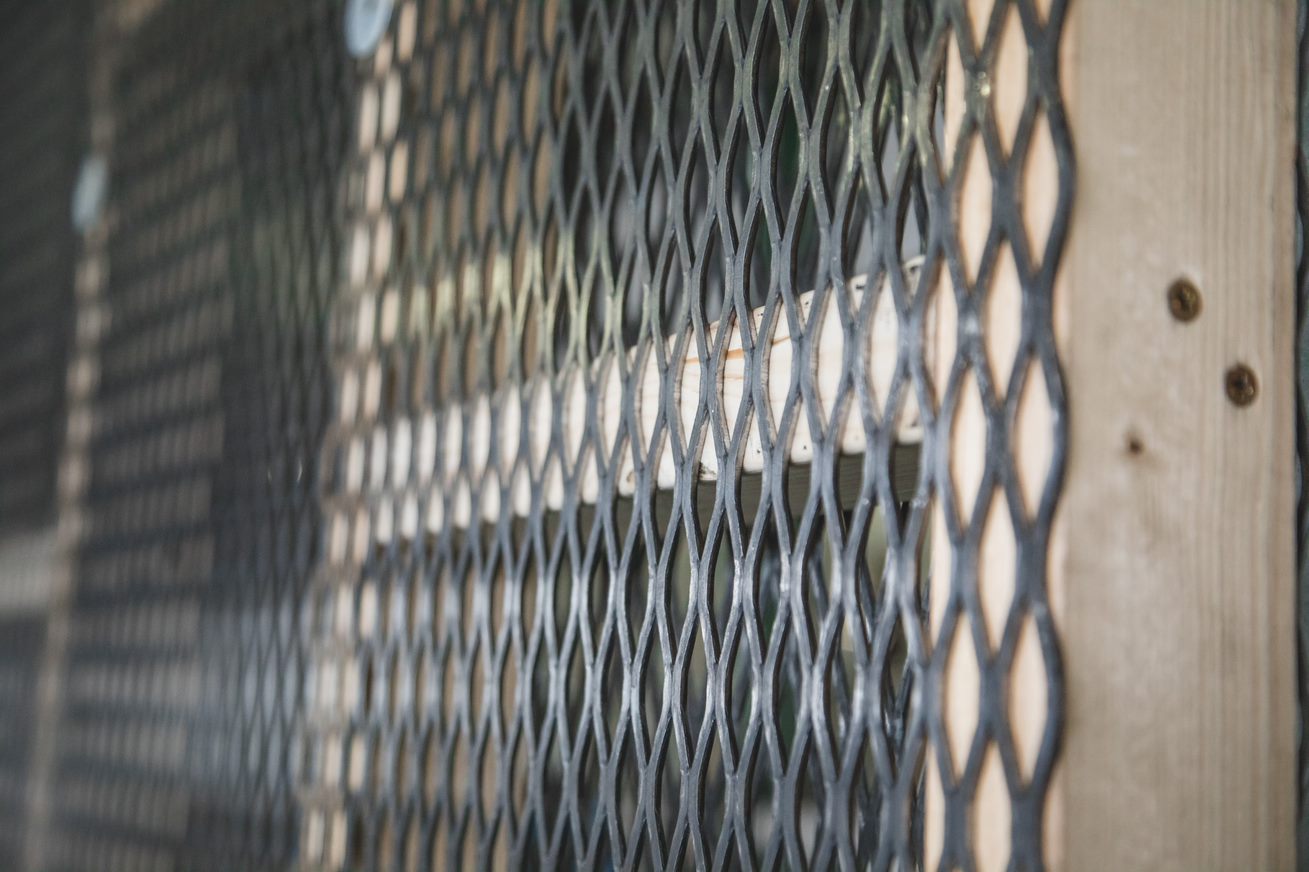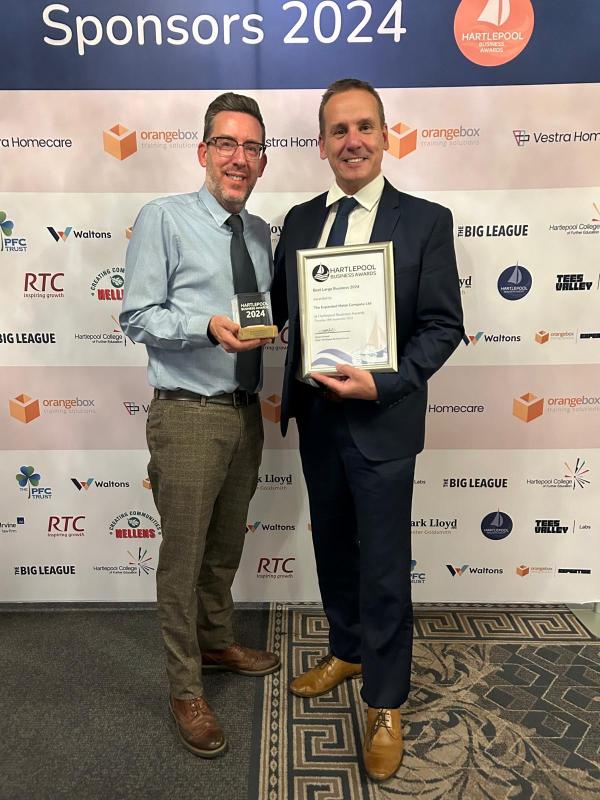The origins of the ExMesh™ security range date back to 1884 when John French Golding first invented and patented the expanded metal manufacturing process.
He forged partnerships with industrialists Mathew Gray, Christopher Furness and Robert Irving Jnr who together with W.B Close brought expanded metal manufacturing to Hartlepool.
Production of expanded metal started in Hartlepool in 1890 on the site The Expanded Metal Company – the manufacturer of ExMesh™ products – still occupies to this day.
Customers included businesses in the construction industry, with mesh being used in buildings all over the world, and from the 1890s, The Expanded Metal Company also manufactured agricultural fencing.
How The Expanded Metal Company’s security range evolved…
Fast forward to the 1980s and The Expanded Metal Company had a thriving fabrication department, which was producing many construction industry-related products such as walkways and stair treads.
Gradually, The Expanded Metal Company started to develop security products. One of the first products manufactured was the Anti-Vandal Scaling Barrier – where expanded metal panels were set around a central rotating bar, preventing intruders from getting a foothold.
Developed in 1981, it represented a considerable evolution in anti-climb methods – and was even showcased on the BBC programme, Tomorrow’s World, as an alternative to broken glass placed on the top of walls.
The Anti-Vandal Scaling Barrier was used extensively by councils and local authorities, as they could store it in depots in kit form and assemble the barriers on site when required. It was a particularly popular solution with Glasgow City Council and Strathclyde District Council.
In 1982, The Expanded Metal Company developed its first security fencing products – the Universal System and the Hy-Security System – which both utilised a lattice-type steel post. The Universal fence was very popular within the water industry and Severn Trent and Yorkshire Water installed it at numerous sewage and water treatment sites.
One of the first major projects involving Hy-Security fencing was at Heathrow Airport, where several car parks were protected by this system.
However, due to the post design, both systems – particularly the Universal System – relied on large numbers of brackets and hook bolts to fix the mesh.
This resulted in lengthy installation times…
Driving innovation in security fencing
There was therefore a need for a post that had less fittings, thus speeding up times for contractors on site.
Box section posts with welded lugs were developed by The Expanded Metal Company. This made the fencing system a viable, cost effective solution, if contractors needed long runs of fencing offering high levels of security, good aesthetics and easy installation. This type of fencing was particularly suitable for use alongside railway tracks – so we introduced the Fastrack System, which was quickly adopted by Network Rail.
We also developed ExMesh™ Fixafence – a mesh which clamps on to existing fence posts. Fixafence has played a key role in protecting the London Underground network, where many miles of dilapidated chain link fencing was replaced with our robust, expanded metal fencing.
ExMesh™ Securilath™ enters the market…

The concept of Securilath™ security mesh was born following the Strangeways prison riot in 1990, when prisoners gained access to the prison rooftops and other wings through unsecured walls and ceilings.
This inspired us to develop a security mesh which would fit discreetly in internal and external walls and Securilath™ has since become one of the most popular products in the ExMesh™ range.
ExMesh™ Securilath™ achieved Loss Prevention Certification Board (LPCB) LPS 1175 certification in 2006 and is often used to target harden buildings and protect critical national infrastructure.
You can read more about the development of Securilath™ – and why it was once called Expamet Securilath™ – here.
Introducing ExMesh™ Alleygator

In 1999, we introduced our high security Alleygator gate system, which was designed to be used to provide additional security in residential developments, local authority sites and other urban developments.
Alleygator – which is certified to LPCB LPS 1175: Issue 5 SR2 – features a high security mesh gate and incorporates a gate frame with side infill panels and additional overhead panels where required.
The first Alleygator gates were installed in Middlesbrough in collaboration with Middlesbrough Borough Council and Cleveland Police.
Secured By Design accreditation
During the 1990s, The Expanded Metal Company continued to develop security fencing and gate systems, working in close collaboration with the PSDB (Police Scientific & Development Branch) and its successor, the HOSDB (Home Office Scientific Development Branch).
We joined Secured By Design (SBD) in 2001, which is the official police security initiative that works to improve the security of buildings and their immediate surroundings to provide safe places to live, work, shop and visit.
SBD developed a product-based accreditation scheme 20 years ago – the Police Preferred Specification – which provides a recognised standard for all security products that can deter and reduce crime.
We were the first security fencing manufacturer to gain accreditation for our products under the Secured By Design scheme – these included high security mesh perimeter fencing and Alleygator.
A commitment to continuous product development – 2020 and beyond
Our team have continued to create new solutions which protect people, property and assets.

In 2017, we launched the ExMesh™ Class 3 Gate. Certified to LPCB LPS 1175 SR3: Issue 7, this double skinned high security mesh gate complements our high security Class 3 fencing range and is designed to protect high-risk sites and critical national infrastructure. These security gates provide resistance against deliberate forced entry by intruders using tools such as hacksaws, crowbars and axes.
The following year, we launched our ExMesh™ Class 2 Gate, which is certified to LPCB LPS 1175 SR2: issue 7, and offers one of the largest security rated opening options available on the market, enabling two lanes of through traffic to move through a perimeter.
In 2020, we achieved new certification for our ExMesh™ Securilath™ product range.
Securilath™ was the first – and remains the only – security mesh range to be certified by the LPCB when applied to metal stud, timber stud and block walls.
And in autumn 2020, we launched ExMesh™ Class 1 fencing. This has LPCB LPS 1175 SR1: Issue 8 certification and provides an alternative to palisade fencing panels when protecting telecoms and utilities facilities, retail sites, transport infrastructure and more.
We are continuing to work on new product innovations as we move into 2021.
You can view the full ExMesh™ security solutions range here.







 GBP
GBP 











